What are the parts of a wheel gauge? |
||||
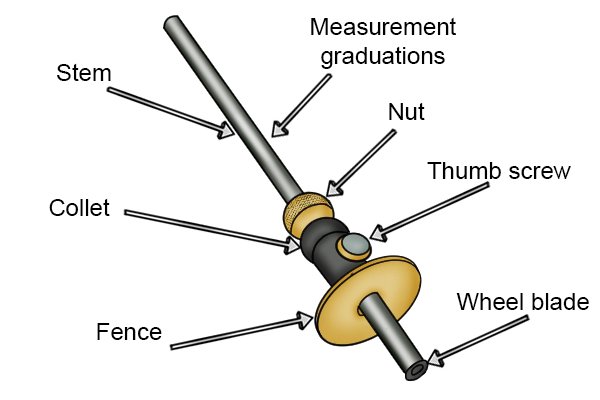 |
||||
Wheel gauge wheel blade |
||||
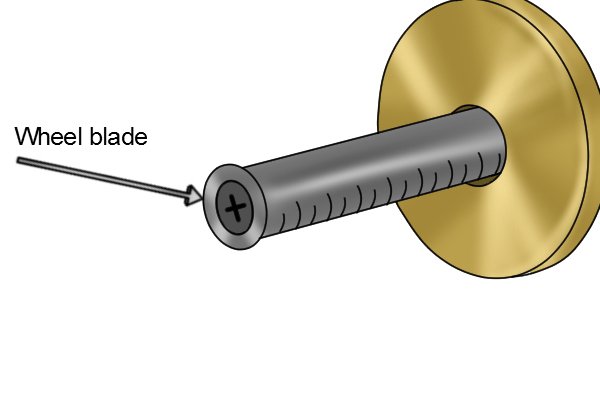 |
The wheel gauge has a round wheel blade which is pulled along a workpiece in the same way as a regular cutting gauge. The round wheel blade can roll across the surface making it easier to keep an even line. The blade is also fully visible to the user, unlike with other gauges, this further helps the user remain accurate.
Like the knife of the cutting gauge, blade is bevelled on one side, this side should be facing the fence so it is on the waste side of your workpiece. |
|||
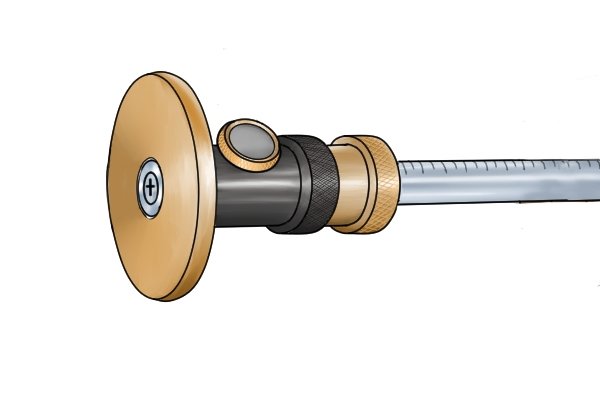 |
When the gauge is not in use, the fence should be moved to the end of the stem where it covers the blade and protects it. | |||
Wheel gauge fence |
||||
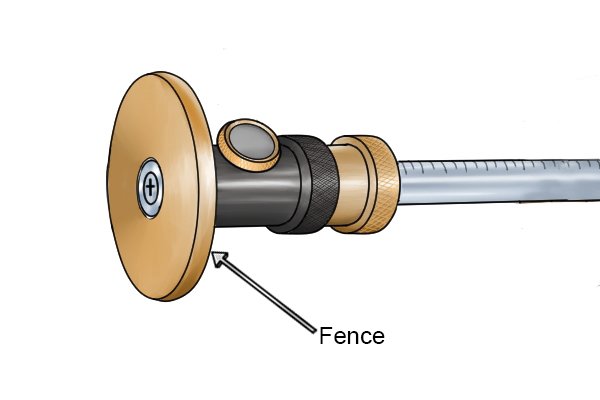 |
The fence of a wheel gauge is also circular, this allows it to move smoothly across the surface.
However, having a smaller fence means there is less surface area pushed up against the workpiece and this can lead to the tool slipping. The fence can move up and down the stem to hold a measurement but does not rotate. |
|||
Wheel gauge stem |
||||
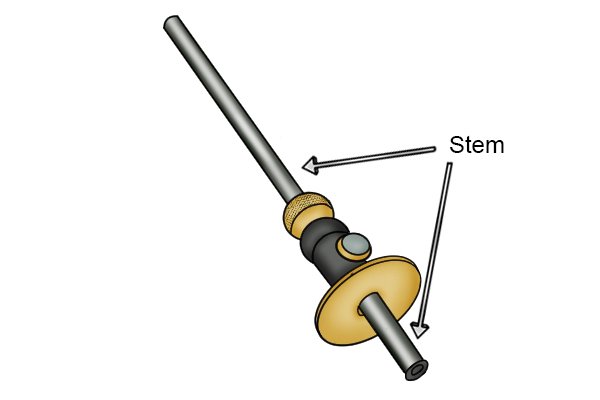 |
The stem of a wheel gauge is a long cylindrical pole. The larger the gauge, the longer the stem is to allow it to reach greater distances. | |||
Wheel gauge thumb screw |
||||
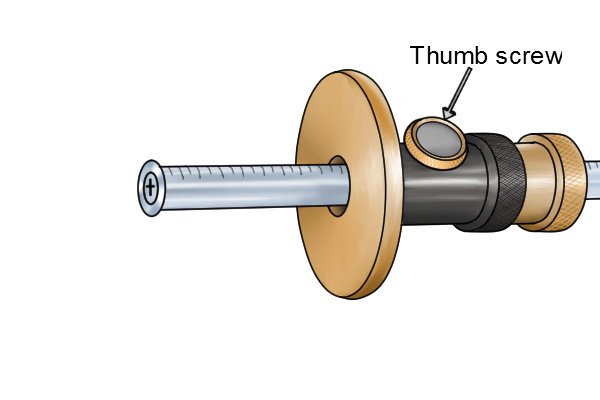 |
The wheel gauge has a thumb screw on the top of the fence. Once the fence has been moved into the desired position, the screw is turned clockwise to lock the fence in place. | |||
Measurement graduations on a wheel gauge |
||||
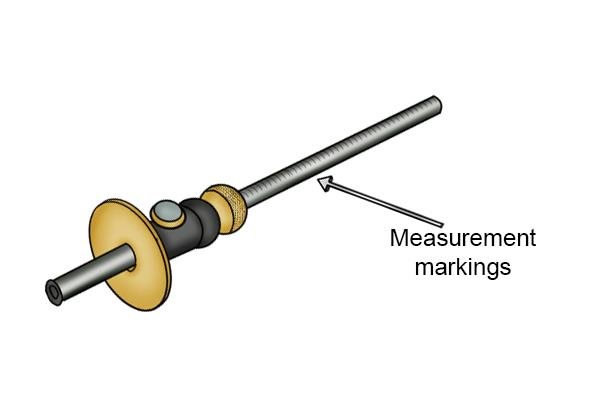 |
The wheel gauge has markings along the stem to allow the user to measure out a length without a ruler. | |||
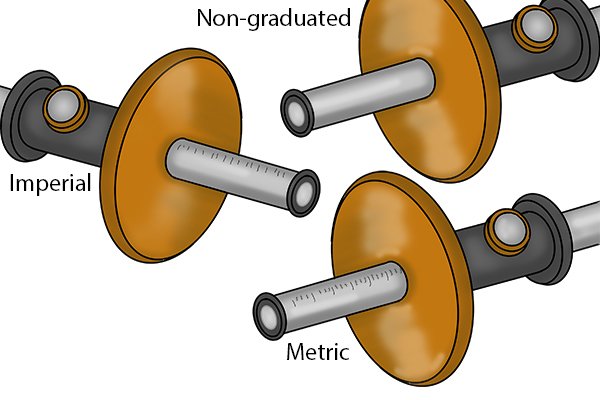 |
The wheel gauge is available with either metric or imperial markings or with both one set on either side. They can also be available with no graduation markings at all, whereby the user simply uses their own judgement or a ruler for the measurement. | |||
Collet and nut on a wheel gauge |
||||
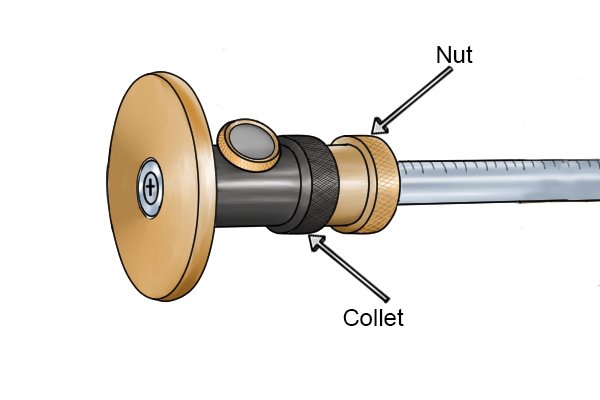 |
Micro-adjust versions of the wheel gauge, named as such because they allow for tiny adjustment, also have a collet and nut. These sit behind the tools fence. Once the fence has been set the collet can be turned to give extra millimetre adjustment to make sure the mark is most accurate. | |||
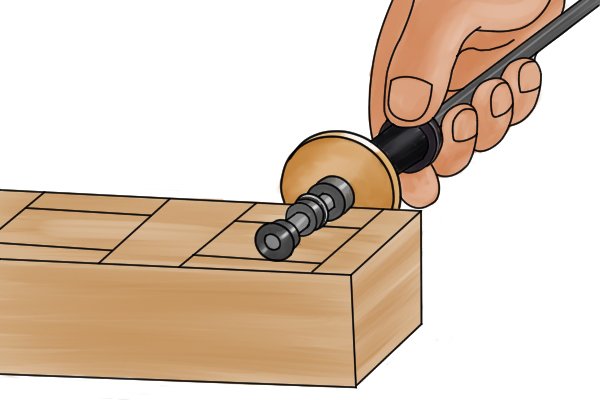 |
They do this by allowing the blade to be moved once it is already in position on the workpiece. For more information see How to use a Wheel Gauge?
|
|||






